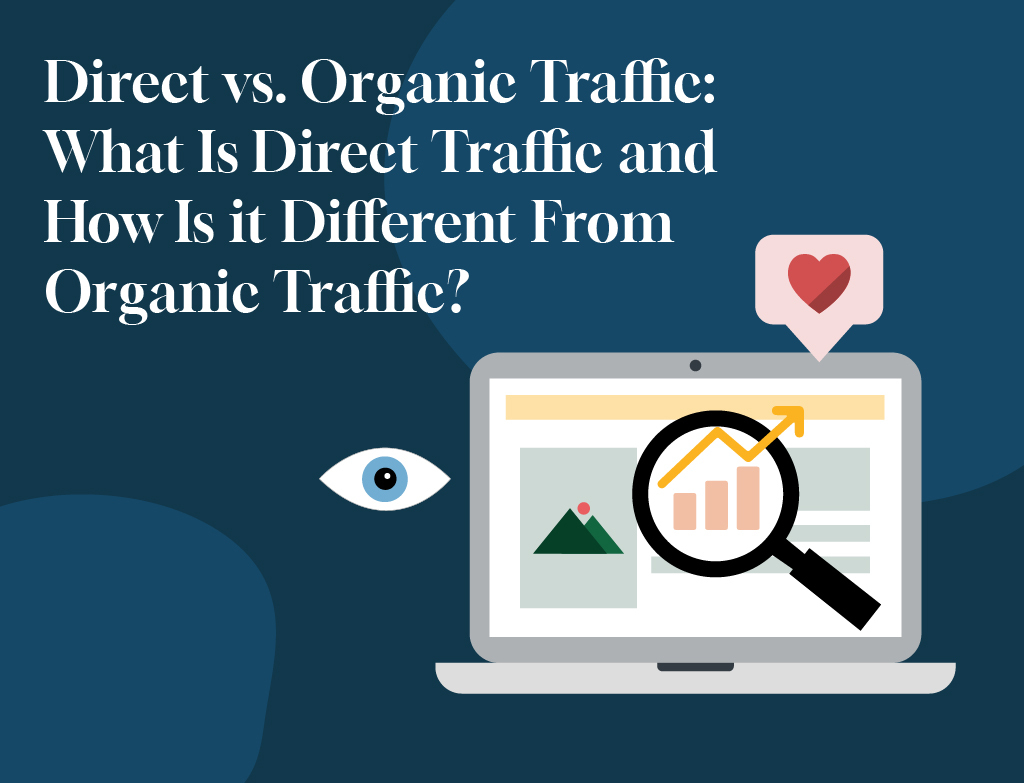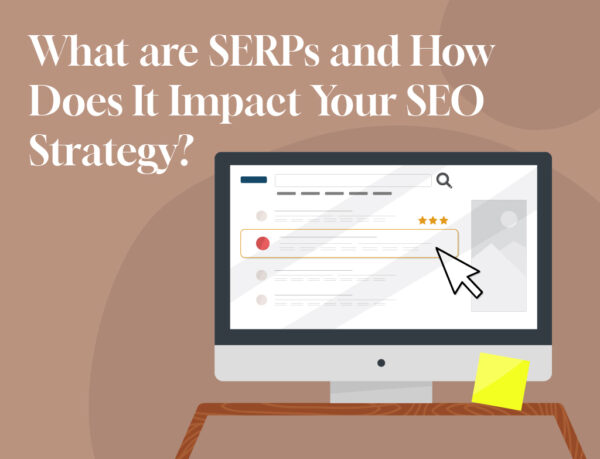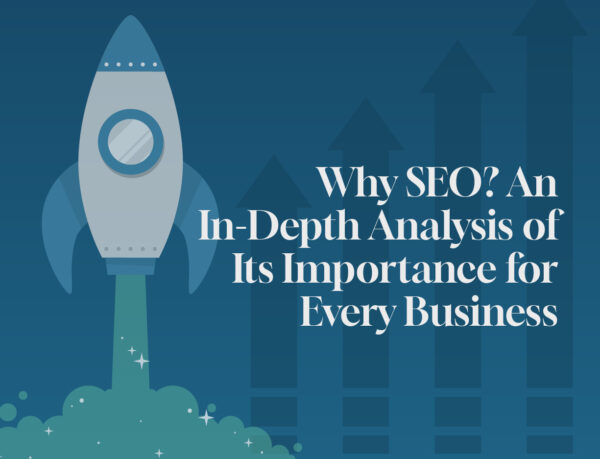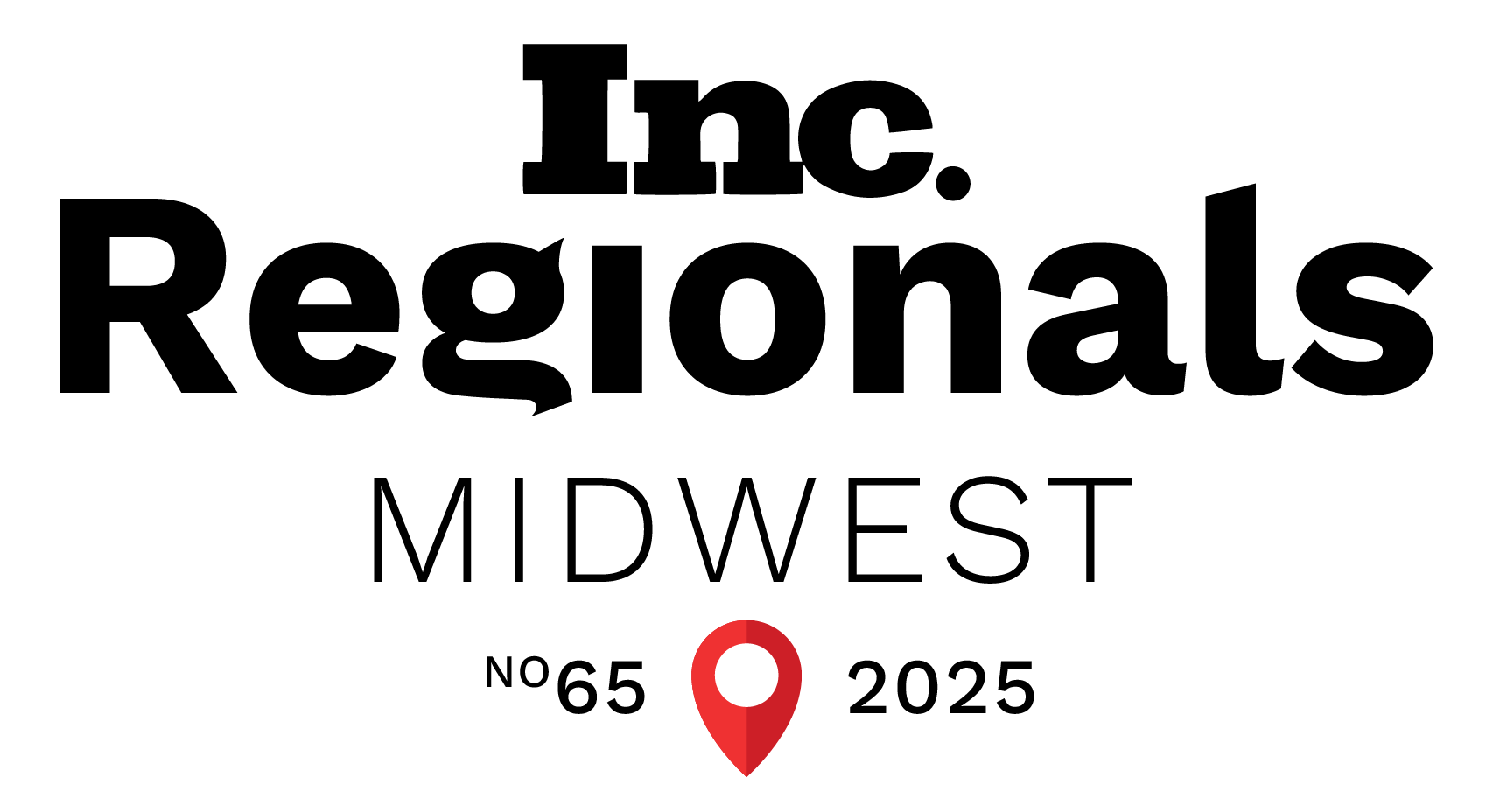Direct vs. Organic Traffic: What Is Direct Traffic and How Is it Different From Organic Traffic?

In This Article
The more traffic you get to your website, the better. Audience members become aware of your brand and company, starting on what will hopefully be a long-term buyer’s journey. Of course, traffic is welcomed!
However, it’s also important to know where your traffic is coming from. Knowing the origin of your audience will guide your marketing strategies and give you better insight into who your leads are and what they’re interested in.
In this article, we’ll review direct vs. organic traffic. The short version is this:
- Direct traffic refers to users who type your website into a URL.
- Organic traffic refers to users who find your site through a search engine.
Although these summary definitions are helpful, today we’re going to dive into the nuances of direct vs. organic traffic, and what it has to do with Google Analytics—just a hint: a lot!
So let’s dive in to better understand the differences between the two types of traffic searches, and why they matter to your business’s marketing strategy!
What Is Organic Traffic?
Organic traffic refers to the people—often referred to as audience members—who come to your website via an organic search method.
And what is organic search? Organic searches happen when someone types an inquiry (or questions) into a search engine, the search engine presents your website, and the user clicks on your website link.
Organic search—or organic traffic—is not the antonym of direct traffic. Instead, it is usually seen as the opposite of a paid search. Organic traffic occurs when those who visit your site are doing so naturally, or without being presented with a paid advertisement.
Organic traffic is directly related to your website’s search engine optimization (SEO), which we will get into in more detail further on in this post. What SEO and organic search really come down to is this:
The higher your website’s SEO is, the more search engines will present your website to searchers. As such, your website becomes an organic search result, and the people who click on your website become organic traffic.
We will discuss in detail how to ramp up your organic search traffic by using SEO digital marketing strategies. But first, let’s talk about direct search.
What Is Direct Traffic?
Direct traffic is the number of visitors who come to your website in any way that is not through a referred, outside website. The short version of the answer to the question “What is direct traffic?” is anyone who types in your website URL directly into a browser. Direct traffic also includes users who access your site because they saved it as a favorites category.
Direct traffic does not include when someone comes to your website through a referred website, meaning they clicked on your site from any mode outside of an address bar (aka that URL bar at the top of your browser).
So, yes. Direct traffic is a direct line to your website. But it is also so much more than that.
Today, direct traffic in many analytic key performance indicators (KPIs) includes those who are returning customers and need to go through your main page to access their account with your business. Although this is a useful metric to have, especially in viewing the lifetime value of customers, it fails to show you how many new direct traffic leads are visiting your website.
Direct traffic can also include your internal employees who visit your website daily. This is not helpful.
In reality, to answer the question of “What is direct traffic?” you must first answer the question of “What is not direct traffic?”
Other Notable Sources of Traffic
We’ve covered organic traffic, which has a clear-cut definition. We’ve covered direct traffic, which has less of a clear-cut definition. Now let’s look at forms of traffic that may be considered direct traffic, but really aren’t.
- Paid search: This happens when you pay for your company’s advertisement to be seen by a target audience, oftentimes leading a user to a landing page.
- Email search: This directs people back to your website or a landing page via email.
- Social search: This happens when a user accesses your website from a social media platform, such as LinkedIn, Facebook/Meta, or Instagram.
- Referral: This is any traffic you obtain from a source outside of a direct URL search or search engine result.
Organic Traffic vs. Direct Traffic: How Are They Different?
When discussing direct vs. organic traffic, we often hear the question: “Is direct traffic organic?” The answer is no. And here’s why:
Traffic refers to the number of users who visit your website. Traffic is a numerical measurement that can lead to tracking other metrics, including:
- Bounce rate: How many people click away after landing on your site
- Traffic-to-lead ratio: How many website visitors become qualified leads and customers
- Cost-per-lead: The individual marketing cost to attain a lead
- And more
Your KPIs are important! They let you know what is and is not working when it comes to your marketing strategy. That is why it’s really important to know where your traffic is coming from.
If organic search traffic on your website pages is dwindling, you know that you should probably focus your efforts on SEO.
Direct and Organic Search Google Analytics
We keep referring to tracking your traffic, but how exactly does one do that? Two words: Google Analytics. There are other software tools that provide metrics for measuring your direct traffic and organic traffic. Nonetheless, our team here at Metric Marketing has found Google Analytics to be a game-changer in accessible, comprehensive data analytics for businesses everywhere!
Google Analytics allows you to split your traffic up into different channels. In what the software calls the channel grouping report, you can see your website traffic via the different sources people are using to access your site.
You can use Google Analytics to track a wide variety of metrics, including:
- Overall site traffic
- Organic search
- Keyword search
- Paid search
- Referrals
- Bounce rate
- Landing page traffic
- Number of pages visited
- And more
When it comes to organic traffic, Google Analytics is a powerful tool to really understand the sources of your website’s visitors.
Understanding Privacy of Organic Sessions in Google Analytics
Organic traffic Google Analytics is a fantastic tool that reveals so much information that can be used for your marketing strategies. It does come with some restraints, however. The latest version of the tool is Google Analytics 4. For this article, it’s important to dive into Google’s privacy.
As privacy concerns grow, more and more software and hardware products are being designed with enhanced security and confidentiality protections built in. In fact, Apple prides itself on its system security and has placed many protective measures into its products for its users.
Much like Apple, the latest Google Analytics 4 program is built with user privacy at its core. Many Identifiers for Advertisers (IDFAs) are full of restrictions. This is a huge deal, but when you think about it, many governmental and private business privacy acts have already been enforced. Google has done this by re-categorizing their page hits into “event properties.” In essence, not all conversions can be tracked because of private data.
With Google Analytics, you can use the data you collect to see trends, including keyword tracking. Those trends can help you make informed decisions about what is working, what needs improvement, and how your marketing strategy needs to evolve.
The Power of SEO
Your amount of organic traffic is directly related to your SEO. That’s the importance of SEO: it drives your traffic. Let’s dive into what SEO actually is, and ways that you can put SEO tools to good use.
What Is SEO?
Search Engine Optimization is the process of increasing your rank with search engines in order to gain visibility on a search engine result page (SERP). By increasing visibility, you also increase the number of qualified visitors to your site.
Through SEO efforts, you will gain visibility as well as increase your online credibility in your industry, becoming a trusted, authoritative voice in your field.
The goal of SEO is to become visible to your audience and increase brand awareness, therefore becoming a go-to for qualified leads and returning customers alike. SEO allows you to beat out your competition by showing your audience that your business has the best product or service.

Why SEO Matters: Methods for Increasing Organic Traffic
SEO matters. Your organic traffic relies on powerful, intentional SEO tactics. As a reminder, the organic traffic definition is the number of online users who land on your website after finding you on a search result page. Organic traffic is the result of using SEO methods to gain visibility rather than paid advertising.
In order to boost your SEO, you can create and implement best SEO practices to show search engines just how credible and professional you are.
User Experience
User experience (UX) is the quality of experience your visitors have when interacting with your website. SEO and UX work hand in hand. The better the UX, the more that search engines see your website as credible. You create a positive experience for prospective customers while increasing your SEO.
To see how your UX is performing, try asking the following questions:
- How do people react to my website?
- What is the bounce rate?
- Is my design consistent across all pages?
- Do I provide support for visitors to my website?
- How navigable is my website?
Evaluate your answers to these questions by reviewing your website both by yourself and with your team, as well as with people active—or not yet active—on your site.
Keyword Visibility
Keywords are the magic ingredients that spice up your website and ultimately guide people to your content. Keywords are the words or phrases that people type into a query bar in a search engine. When your content includes the keywords used by those seeking answers, your website pops up!
Keyword visibility is more than simply a plug-and-chug method of putting keywords into content. In fact, because of how advanced Google Algorithms has become when ranking pages, you really should not do that. Instead, use keywords to communicate helpful, relevant information to Google searchers everywhere.
Keyword visibility takes a lot of research and intent. Talk to our SEO and content experts here at Metric Marketing if you need some guidance to start your keyword visibility journey!
Content
Speaking of keywords, you need to put all of your research into practice! Anytime you create content, you are showing who you are to your audience. Content is the voice of your brand.
Having consistent, informative, brand-driven content is a great way to boost your SEO and keep people coming back for more!
Accessibility
Accessibility goes hand in hand with UX. An accessible website is available for all viewers. Accessibility methods include:
- Subtitles on videos
- Readable text
- Contrasting colors for sight
- Talk-to-text options
- Mobile device accessibility
- Minimal distractions
- And more
Make sure that your website is welcoming and available to all people.
Site Architecture
Site architecture is how your site navigates. Are people able to navigate well through your website? Are they able to go back and forth between pages without getting lost? Is each page organized to fit under a particular category?
Site architecture really comes down to how well your site is organized. Good site architecture acts like a map that can guide your users as they explore your site.
Another component of the architecture is the backend structure. How your website’s code is formatted matters. Search engines use this backend structure to gather information about your page and present it to searchers. A clean, organized foundation for your site makes it easier for search engine crawlers and increases your chances of a high ranking.
Balance Between Architecture and Design
Your architecture needs to be organized and navigable. Your website also needs to be visually appealing to keep the interest of your visitors. A great website will have strong web development without sacrificing design.
The Proof Is in the Metrics
At Metric Marketing, we let our results speak for themselves. If you’re interested in seeing just how much SEO and keyword searching matter, take a look at our life science marketing case study. Among the data, you’ll learn how—using SEO—we helped biotech firm Akadeum build their contact base from 100 to over 15,000.
Contact Metric Marketing Today
Interested in increasing your direct and organic traffic? Need some more clarification on an organic search definition? Talk to our professional search engine optimization team at Metric Marketing today!
We have the knowledge, experience, and expertise to make your marketing goals a reality. Contact us at (734) 404-8714 or fill out an online form today. We look forward to hearing from you!
Must-read articles
Looking for something else?
There's so much more
Ready to Inquire?














